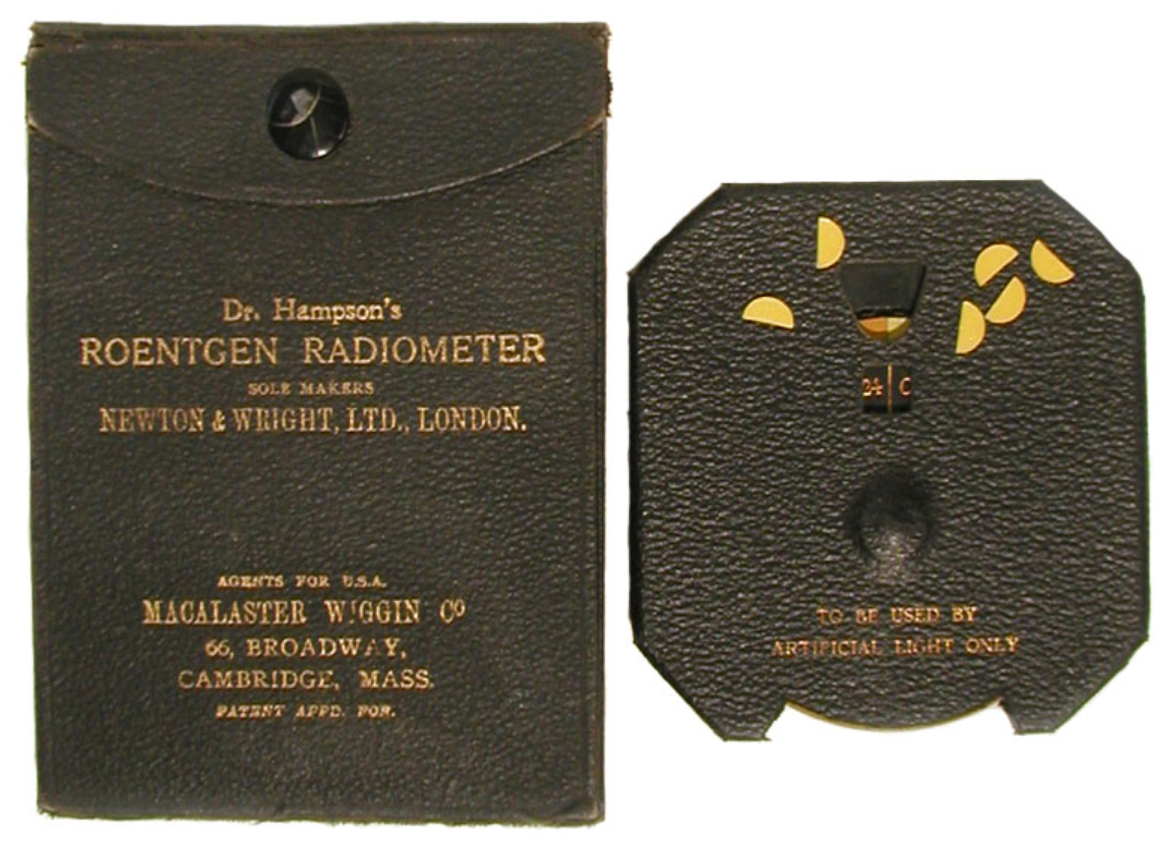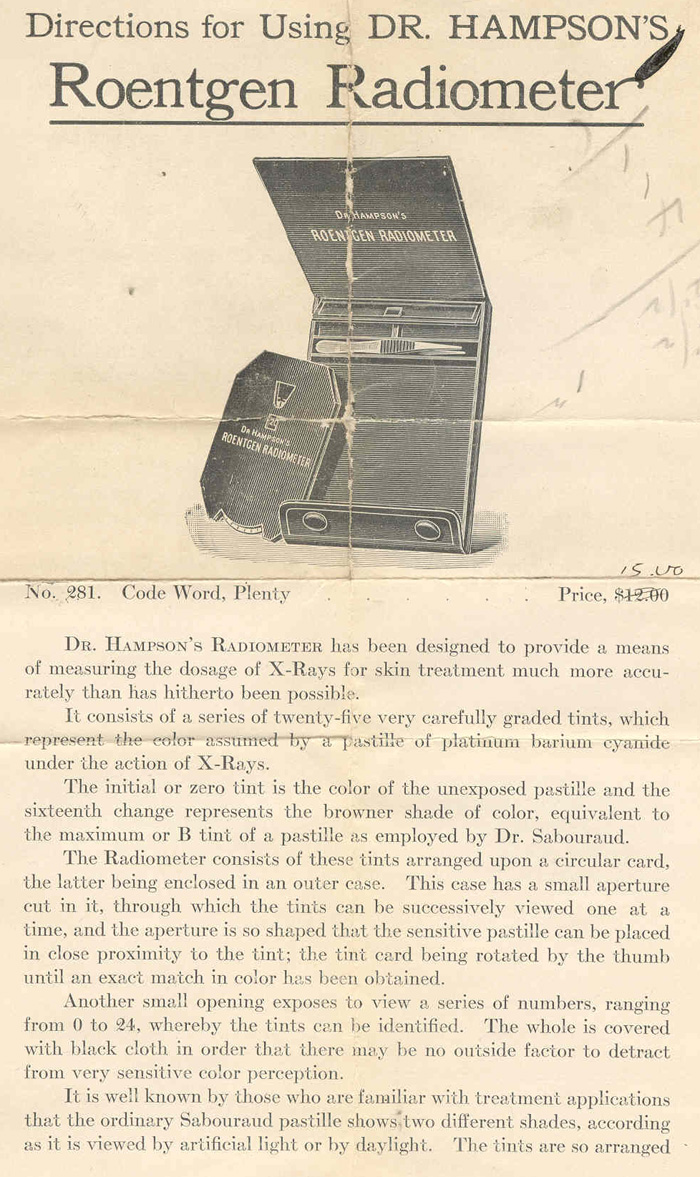Dr. Hampson's Roentgen Radiometer (ca. 1910-1920)
At the time that it was produced (ca. 1910-1920) Dr. Hampson's Roentgen Radiometer was marketed as an improvement over the other colorometric methods for determining the dose from X-rays. Whereas the Sabouraud dosimeter had only two color gradations (Tint A and Tint B) and the dosimeter of Bordier had four or five, Dr. Hampson's Radiometer employed 25 "very carefully graded tints."

The above photograph shows six semi-circular pastilles (ca. 3/8" across) coated with barium platinocyanide on top of the calibration wheel. After the exposure to radiation, the pastille would be placed in the window just above the exposed portion of the top of the wheel. The wheel was then turned until the numbered shade on the wheel matched the color of the pastille. A shade equivalent to number 16 corresponded to Sabouraud's tint B.
A shade of 4 on the Hampson scale corresponded to a "full erythema dose," the standard exposure used by dermatologists. One of the advantages of the Hamson radiometer was that an exposed pastille could be reused immediately. The physician simply subtracted the number for the first exposure from the number obtained from the second exposure. As such, two standard treatments in a row would result in a final shade of 8 on the Hamson scale.
Quoting Robert Knox (1918) "place the pastille on the patient's skin, and a full epilation dose is obtained when the pastille has turned four divisions on the scale. When the sensitive pastilles are exposed to daylight, it is known that they return, to a great extent (although not absolutely), to their initial color."
The following quote (Lovibond, 1915) D. Corbett is discussing the use of color change for "the exact measurement of X-ray dosage": "Hitherto the only methods at all generally used have been Hampson's radiometer and Bordier's radio-chronometer [sic], the former in this country, and the latter on the Continent. Hampson's instrument has two disadvantages: it can only be used with electric light, and the standards are made of tinted paper liable to get soiled, and vary slightly with the changes in the pigment employed. Its advantage is that it may be used as a sliding scale, thus economizing the pastilles. Some persons, however, have considerable difficulty in reading the tints."

Size: 3.5" x 5" (case); 3.25" (wheel)
References
- Knox, R. Radiography and Radio-Therapeutics. Part II. 1918.
- Lovibond, J.W. Light and Color Theories and their Relation to Light and Colour Standardization. 1915.
